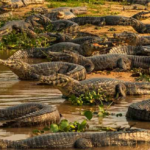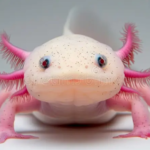Introduction to the Chiguire
Meet the chiguire, a remarkable creature that captures attention with its unique charm. Often overshadowed by more glamorous wildlife, this gentle giant is the largest rodent in the world. With its serene nature and striking appearance, it deserves a closer look. Found primarily in South America, particularly along waterways and wetlands, the chiguire thrives in lush environments.
Curious about what makes this fascinating animal stand out? From its physical traits to its vital role in ecosystems, there’s much to explore about the life of the chiguire. Let’s dive into everything that makes this extraordinary rodent one of nature’s hidden treasures!
Physical Characteristics of the Chiguire
The chiguire, also known as the capybara, is a fascinating creature. It holds the title of the largest rodent in the world. Weighing between 77 to 150 pounds, it’s a hefty animal.
Its body is long and barrel-shaped, covered with coarse brown fur that helps it blend into its wetland habitat. Chiguires have slightly webbed feet that aid in swimming—a common activity for them.
These rodents possess large heads with prominent eyes positioned high on their faces. This adaptation allows them to keep an eye out for predators while submerged in water.
Their teeth are ever-growing, typical of rodents. They constantly gnaw on grasses and plants to keep them trimmed down.
Chiguires exhibit a charming appearance and intriguing features that make them stand out among wildlife species.
Habitat and Distribution of the Chiguire
The chiguire, also known as capybara, thrives in diverse environments across South America. These remarkable rodents prefer wetland areas like swamps, riversides, and marshes. Their affinity for water allows them to stay cool under the sun while providing a quick escape from potential predators.
You can find chiguires mainly in countries such as Venezuela, Colombia, Brazil, and Argentina. They often inhabit regions with abundant vegetation where they graze on grasses and aquatic plants.
These social creatures live in groups that can range from 10 to over 100 individuals. This social structure enhances their chances of survival by allowing them to watch out for each other while foraging or lounging near the water’s edge.
Their distribution is closely linked to freshwater sources since they require access to water not only for drinking but also for bathing and maintaining their fur health. The presence of suitable habitats plays a crucial role in sustaining this unique species.
Diet and Behavior of the Chiguire
The chiguire, also known as the capybara, is primarily herbivorous. Its diet consists mainly of grasses, aquatic plants, and fruits. This dietary preference makes it an essential part of its ecosystem.
Chiguires are social creatures. They often gather in groups ranging from 10 to 20 individuals. This behavior provides safety in numbers against predators like jaguars and caimans.
During the day, they graze leisurely on vegetation. Their strong teeth help them efficiently chew through tough plant material.
Interestingly, these animals are excellent swimmers. They can stay submerged for up to five minutes while evading threats or simply cooling off in water.
Communication among chiguires includes a variety of sounds—from barks to purrs—each serving a specific purpose within their social interactions. These vocalizations strengthen bonds between group members and alert others to potential dangers nearby.
Importance of the Chiguire in Ecosystems
The chiguire, or capybara, plays a vital role in its ecosystem. As the largest rodent in the world, it significantly influences its habitat.
These creatures are herbivores and primarily feed on grasses and aquatic plants. By grazing, they help maintain plant diversity and prevent overgrowth. This behavior contributes to healthier wetlands and grasslands.
Moreover, chiguires serve as prey for various predators like jaguars, caimans, and large birds of prey. Their presence supports the food chain dynamics within their environment.
Their social structures also promote interactions among other species. When gathered in groups near water sources, they create opportunities for different animals to thrive alongside them.
In essence, the chiguire is more than just a charming animal; it’s an integral part of maintaining ecological balance in its native habitats.
Cultural Significance of the Chiguire
The chiguire, known as capybara in some regions, holds a special place in various cultures across South America. Revered for its gentle nature, this large rodent often symbolizes peace and community.
In countries like Venezuela and Colombia, the chiguire is celebrated during festivals. Some locals even participate in culinary traditions centered around this animal. Its meat is considered a delicacy during specific times of the year, showcasing how integral it is to regional diets.
Beyond food, the chiguire influences art and folklore. Many stories feature this creature as a central character that embodies wisdom or tranquility. These narratives are passed down through generations, reflecting cultural values tied to nature’s harmony.
As people continue to appreciate the role of the chiguire in their heritage, they also raise awareness about conservation efforts essential for preserving both wildlife and cultural identity. This connection fosters respect for biodiversity while highlighting human-animal relationships.
Conservation Efforts for the Chiguire
Conservation efforts for the chiguire, or capybara, are gaining momentum. Various organizations are working tirelessly to protect their natural habitats across South America.
These large rodents face threats from habitat destruction and hunting. As wetlands and grasslands shrink due to agriculture and urban development, the need for protective measures becomes urgent.
Community-based initiatives play a crucial role in conservation. Local populations are educated about sustainable practices that benefit both humans and chiguires. This collaboration fosters coexistence between people and wildlife.
Protected areas have been established to provide safe havens for these animals. National parks and reserves serve as vital sanctuaries where they can thrive without interference.
Research is also essential in understanding their behavior and ecology better. Ongoing studies help inform policies aimed at preserving their populations amid changing environments.
Conclusion
The chiguire, or capybara as it is known in many regions, stands out as a remarkable creature that embodies the essence of adaptability and ecological significance. With its unique physical features, such as webbed feet and large size, this fascinating rodent has carved out a niche in diverse habitats across South America.
In addition to their impressive adaptability, chiguires play an essential role in their ecosystems. By grazing on grass and plants, they help maintain vegetation balance while serving as prey for various predators. Their social structure also contributes to the health of their groups and aids in survival against threats.
Culturally, these gentle giants are celebrated not only for their intriguing behavior but also for their place within local traditions. From culinary uses to symbolism in folklore, the chiguire holds importance beyond its biological role.
As conservation efforts continue to address habitat loss and hunting pressures faced by the chiguire populations, awareness of its value becomes increasingly vital. Protecting this species ensures that future generations can appreciate both its charm and ecological contributions.
By understanding more about the chiguire’s characteristics and significance, we foster appreciation for biodiversity. This could inspire collective action towards ensuring sustainable management practices that protect these remarkable animals well into the future.


